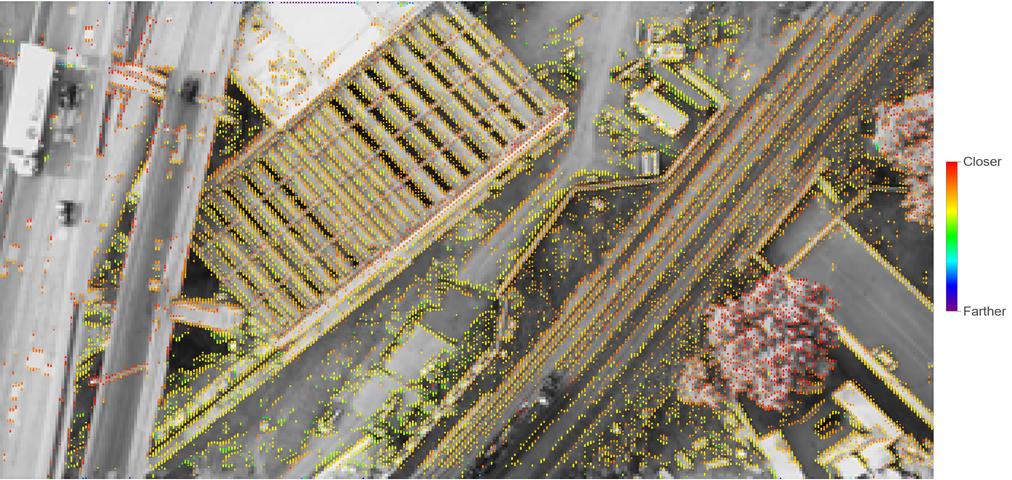Cyclopean Optical Flow
Optical flow is the computed motion referent to a sequence of images. The semblance of this information will be directly linked to an algorithm’s capacity defined by a variety of methods emerged along the years. In this research, we focused on traditional gradient-based estimations.
Implementation
Down below, we share some results of one dimensional cyclopean optical flow over aereal depth estimation.

This method explores improvement of traditional flow estimations by relying on a "cyclopean" reference point between two intensities. The cyclopean value is expected to improve accuracy of gradient-based methods due to the shared distribution with all involved signals during the solving of optical flow. By having two dynamic ends of information, the algorithm's capacity increases while also presenting a new feature of constraint, granting controled flexibility. This can be translated as a mixture of sparse and dense approaches, therefore, an adaptable motion validation. Also, the use of pyramidal representation was explored to enhance results, involving a dual representation of motion for a smooth transition along low and high resolution.
Discussion:
Fig.1 is the depth estimation of two frames extracted from an aereal video of the City of Montreal.
- Regions with a lack of texture can't be solved.
- Objects with movement (like the cars) can't be solved.
- Big motions can't be solved Therefore:
- Incoherent results are locally minimized without merging with neighoring values.